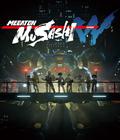
Genre: Role-Playing Game
Publisher: NIS America
Developer: GUST
Release Date: May 15, 2007
 Atelier Iris 3: Grand Phantasm is a bit different from the previous games in the series. In the world of Atelier Iris 3, there exist portals to alternate worlds called Alterworlds. These Alterworlds are filled with rare materials and dangerous monsters that can't be found in the regular world, and thus are a prime target for treasure seekers. Entry into Alterworlds is governed by the Raider's Guild, dedicated to ensuring that only skilled warriors enter these dangerous lands. Atelier Iris 3 follows the story of Edge and Iris, a pair of Raiders. Iris is the last of the line of Alchemists, a powerful group of magicians who can transmute material. All she has left from those Alchemists is a mysterious book, bound with unbreakable chains so that it can never be opened. However, when on a routine quest into an Alterworld, Edge and Iris discover a mysterious gem that breaks the chains on Iris' book and reveal that it is the Escalario, a powerful book of forgotten magic that is said to be able to grant any wish. Now, in order to complete the Escalario and receive her wish, Iris must find the remaining gems. And thus, the story begins.
Atelier Iris 3: Grand Phantasm is a bit different from the previous games in the series. In the world of Atelier Iris 3, there exist portals to alternate worlds called Alterworlds. These Alterworlds are filled with rare materials and dangerous monsters that can't be found in the regular world, and thus are a prime target for treasure seekers. Entry into Alterworlds is governed by the Raider's Guild, dedicated to ensuring that only skilled warriors enter these dangerous lands. Atelier Iris 3 follows the story of Edge and Iris, a pair of Raiders. Iris is the last of the line of Alchemists, a powerful group of magicians who can transmute material. All she has left from those Alchemists is a mysterious book, bound with unbreakable chains so that it can never be opened. However, when on a routine quest into an Alterworld, Edge and Iris discover a mysterious gem that breaks the chains on Iris' book and reveal that it is the Escalario, a powerful book of forgotten magic that is said to be able to grant any wish. Now, in order to complete the Escalario and receive her wish, Iris must find the remaining gems. And thus, the story begins.
The first major difference between Atelier Iris 3 and the earlier games in the series is the presence of the Alterworlds. Each Alterworld is different, ranging from a single forest to a beautiful maze of crystal, to an endless warring battlefield between two different groups. Each Alterworld has its own unique set of monsters and items that can be found through careful exploration. However, Alterworlds also have another unique property: Any humans who enter the Alterworld can only remain there for a limited time, after which the humans are forcibly ejected from the Alterworld. This means that each dungeon has a fairly strict time limit. Finding certain hidden items or fighting monsters can slow down the clock or even give you extra time, but at some point, you have to leave. While this may sound frustrating, in practice it works very well. Finding the fastest way through a dungeon and rushing to get to a location adds a real sense of excitement and tension to the regular dungeon-crawling antics found in the previous Atelier titles.
In fact, the entire dungeon process has been streamlined incredibly. Alterworlds are laid out in very simple and easy-to-memorize ways, quest locations are clearly marked on the game's map, and finding your way around the Alterworlds is free of unwelcome frustration. Even fighting monsters is streamlined in very welcome ways. Any monsters in the Alterworld appear as formless shapes found on the main map. Touching or striking one with your sword initiates combat, although for the most part, they are also fairly easy to avoid. However, once your characters' levels become high enough, certain weak enemies will turn from the regular silver color to a shade of blue. In this form, you can defeat the enemies without going into combat by striking them with your sword ... and still get the items for fighting them! This makes traveling through earlier areas to find items for alchemy a much less frustrating experience indeed.
Compared to the rather lackluster combat found in the original two Atelier Iris games, fights in Atelier Iris 3 are a joy. Like the other games, Atelier Iris 3 is a turn-based combat system. Combat order is shown on "cards" at the top of the screen, and when a card reaches the right side, that character can act.
One new addition to the combat system is the Burst meter. As your side does damage, the Burst meter at the bottom of the screen begins to fill up. Taking damage lowers it, and if one of your team members should die, the bar is halved. However, once the bar is filled, combat enters Burst Mode, which means your Skill Bar is instantly filled to nine gauges, all enemies are stunned, and all special attacks do significantly more damage than usual. Burst Mode lasts for as long as the Burst bar is filled, however, so getting the most out of your Burst Mode involves deciding which moves are the most useful. Each action you perform takes a specific amount of the Burst bar, with some being weaker but significantly less draining on your meter, while heavy-hitting attacks can halve it in one go. A well-timed Burst Mode can enable you to easily destroy any foe in your path, and this makes combat much faster than previous games.
Another interesting new feature is the Blades system. Unlike the early games, Mana, the powerful spirits that govern the magic in the world of Atelier Iris, are not used for alchemy. Instead, they bestow Blades upon your characters. Similar to the Reyvateil costumes found in the last Gust offering, Ar Tonelico, Blades are new outfits for your heroes. Beyond changing how the character looks, however, Blades also give them new weaponry and special moves. For example, the first Blade that Edge receives transforms him into a ninja. He uses kunai instead of swords, and his special moves all change to ones focusing on speed and combo hits. Later on, he gets to wield the power of the undead instead. This takes the form of a giant axe, and the ability to sacrifice items like Monster Bones to summon powerful undead attackers. Each form has its own strengths and weaknesses and adds a fun touch of customization to your characters.
Of course, what would an Atelier Iris game be without alchemy? Although Iris is the last of the great alchemists, she still has quite a bit of raw talent. While a good number of items can be created by finding alchemy recipes in stores and chests, much of the knowledge of alchemy has been lost to the ages. Instead, Iris must come up with new equipment herself. As you explore the town and dungeons, occasionally you'll find an "inspiration point." Finding these points gives Iris a new (and often silly) idea which she turns into reality with alchemy. The more Iris creates, the more skilled she becomes. Create enough items, and Iris' alchemy raises a level, increasing her combat power and opening up new inspiration points throughout the game's various levels.
Alchemy can be used for a number of things. The most basic way to use it is to create items, such as healing potions from simple and easy-to-find materials. However, as you advance in the game, more and more recipes for weapons and armor becomes available, and using alchemy correctly allows you to create weapons many times better than any you'd find or buy. When creating a piece of equipment, most items have a "property" built in, such as "Atk+(S)" or "Heavy." When that item is used in an alchemic transmutation, the property can be transferred over to the equipment that is created, significantly increasing their attack power.
Weapons can hold two "properties," and armor and accessories can only hold one apiece. These properties significantly increase the attack power and attributes of the item they are equipped on, and turn what is an average weapon into a death-dealer. Furthermore, older equipment can occasionally be used in newer alchemy, allowing you to transfer properties from old weapons and armor to new ones. Creating the most powerful weapons is a careful balancing game, as specific items can only be used with specific recipes, and if you want your most powerful sword to have "Atk+(L)" and "Hit+3" skills, you're going to need to plan it out.
Atelier Iris 3: Grand Phantasm is really shaping up to the best in the series by far. By focusing more on the gameplay and less on the rather lackluster plots, Grand Phantasm has brought most of the strengths of the series to the forefront. The quicker gameplay, better battle system and improved alchemy all combine to make Atelier Iris 3 a lot more fun than its predecessors. As long as the entire game can maintain this momentum, Atelier Iris 3 is shaping up to be a must-buy for any PS2 RPG fans looking for a fun new title.














































